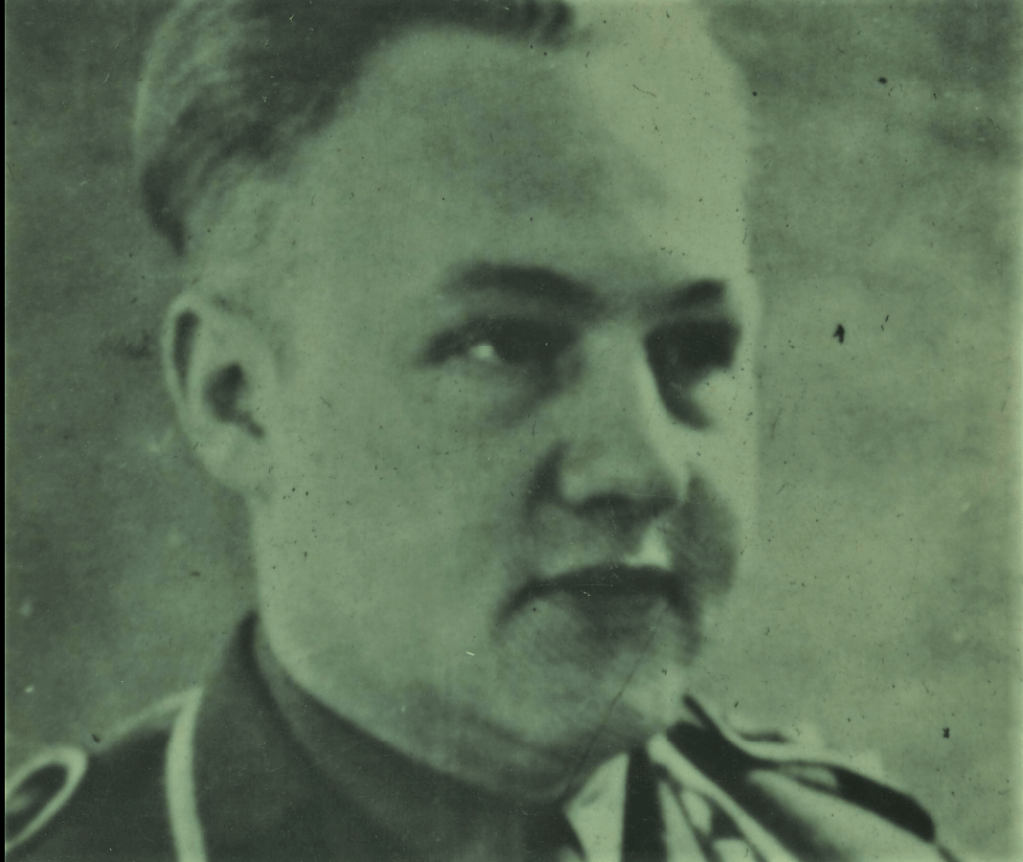
Now I will not say if I believe Reintje Kosmis was a villain [or not], but I will leave it up to you to decide. I always try to be as non-judgmental as possible in cases like this.
Reintje Kosmis was born 9 May 1900 in Emmen, the Netherlands.
Survival or betrayal is a diabolical dilemma in times of war. Writer and researcher Paul van de Water wrote a book about more than fifty women in the Netherlands and Flanders who were wrong during the Nazi occupation. One of them was Reintje Kosmis. During World War II she walked the fine line between right and wrong.
Reintje Kosmis had a tough childhood. She was born in Weerdingerveen, close to Emmen. Her father was rarely home. As an inland skipper, he was always on the go. She had a brother and two sisters, but we do not know if she got along well with them is not known.
Things were not going well at school. Kosmis was, to put it mildly, not too bright. She was 12 years old when her parents decided to divorce. Her father and his son, Reintje, left for Amsterdam, and she remained in Drenthe with her mother and two sisters. There had to be food on the table, so the young Kosmis had to get to work immediately. Later they move to Odoorn, where her mother’s new husband resided.
“And there she was guilty of theft,” according to writer Van de Water. Arrested—her punishment was prison for six months. She spent four months behind bars, but her reputation was now known as a thief in Odoorn and the surrounding area.
She decided to leave Drenthe, and head for Amsterdam, where she met her future husband. They were married, but after a few years, she divorced. The new relationship proved difficult and also ended in a divorce. Just before the German occupation, she met Salomon Jacobs, a well-to-do Jewish man. They married in May 1941 and relocated to Groningen.
Salomon Jacobs had previously been married to Adriana van Kralingen. They were divorced on 13 February 1935 in The Hague, when the persecution of the Jews also began. Jacobs was arrested and sent to Auschwitz, where the Nazis murdered him on 31 May 1944. Kosmis was left alone in the house as impoverished as her early years. To earn money to put food on the table, she rented rooms and looked for hiding places for Jews.
She’s betrayed, arrested and thrown into prison. There, she’s told, “You can be released, but we want something in return.” Indeed, Kosmis decided to give something back to the Nazis to be released. She betrayed a transport of Jewish people in hiding. They were all arrested, including their helpers.
Kosmis is released and allowed to go home. In her absence, her home was robbed. She reported the burglary to the police, putting her in contact with Jannes Luitje Keijer. He was a rogue police officer responsible for compiling lists of people considered undesirable. to be handed to the Nazis. He also made lists of places where people were hiding and who helped them.
Kosmis befriends Keijer, and together, they pursue an intimate relationship. In the meantime, the resistance also approached Kosmis. They knew that the police officer was dangerous. The resistance asked Kosmis to get information about Keijer. They killed Jannes Luitje Keijer on 22 April 1944. Whether Kosmis provided the information which led to the murder is not known. However, it’s known that she did go to the head of the Sicherheitspolizei, Robert Lehnhoff.

During a meeting in a hotel, Jacobs-Kosmis informed Lehnhoff that Keijer’s murderer would travel to the West by train the next day.
On the day of the murder, Rijnders, a member of the resistance, had told a friend, Tiba Heeren, that he had met and spoken with Keijer on the train. Heeren passed on this news to her friend Reintje Kosmis, who combined several things. Josef Kindel, a German SD officer and Evert Cornelis Drost, a Dutch SD officer, were instructed to arrest Rijnders, who used the name Iterson, on the train. His papers showed he developed resistance activities in Hilversum and the surrounding area. However, he had nothing to do with the assassination. On the night of 25 April 1944, Lehnhoff, Kindel, Drost and driver Mowinski drove with Rijnders to Ten Boer.
In a quiet place on the Damsterdiep, Lehnhoff shot him from a meter away. On Lehnhoff’s orders, the others present, except for Kindel, also fired at Rijnders. The next day, the local police found his remains near Garmerwolde.
The story of Kosmis wasn’t over yet with the murder of resistance fighter Bernard Rijnders. After Robert Lehnhoff committed the murder, she had an intimate relationship with him. She also continued to rent out rooms. She also scammed Jews by pretending to bring them safely to England.
An example of this is the story of the Wertheim sisters. They had to pay four thousand guilders to Kosmis, who told them she’d get them safely to England. As soon as the sisters arrived in Scheveningen, the Sicherheitsdienst picked them up. Via Westerbork, they arrived in Auschwitz, where, one was murdered, and the other survived. After the war, the surviving sister made a heavily incriminating statement against Kosmis. The double game Kosmis played ended on 8 May 1945, upon her arrest. Six months later, she appeared in court. Not only did Wertheim provide an incriminating statement against her, but also Robert Lehnhoff of the Sicherheitspolizei; the man Kosmis was dating.
The public prosecutor demanded the death penalty, but she received a life sentence instead. Kosmis filed multiple pardon requests; they were all rejected. Her release came 20 years later. Ironically she spent the last years of her life renting out rooms.
sources
https://www.wo2slachtoffers.nl/bio/52010/Rijnders-Bernard-Jacques-Cornelis.htm